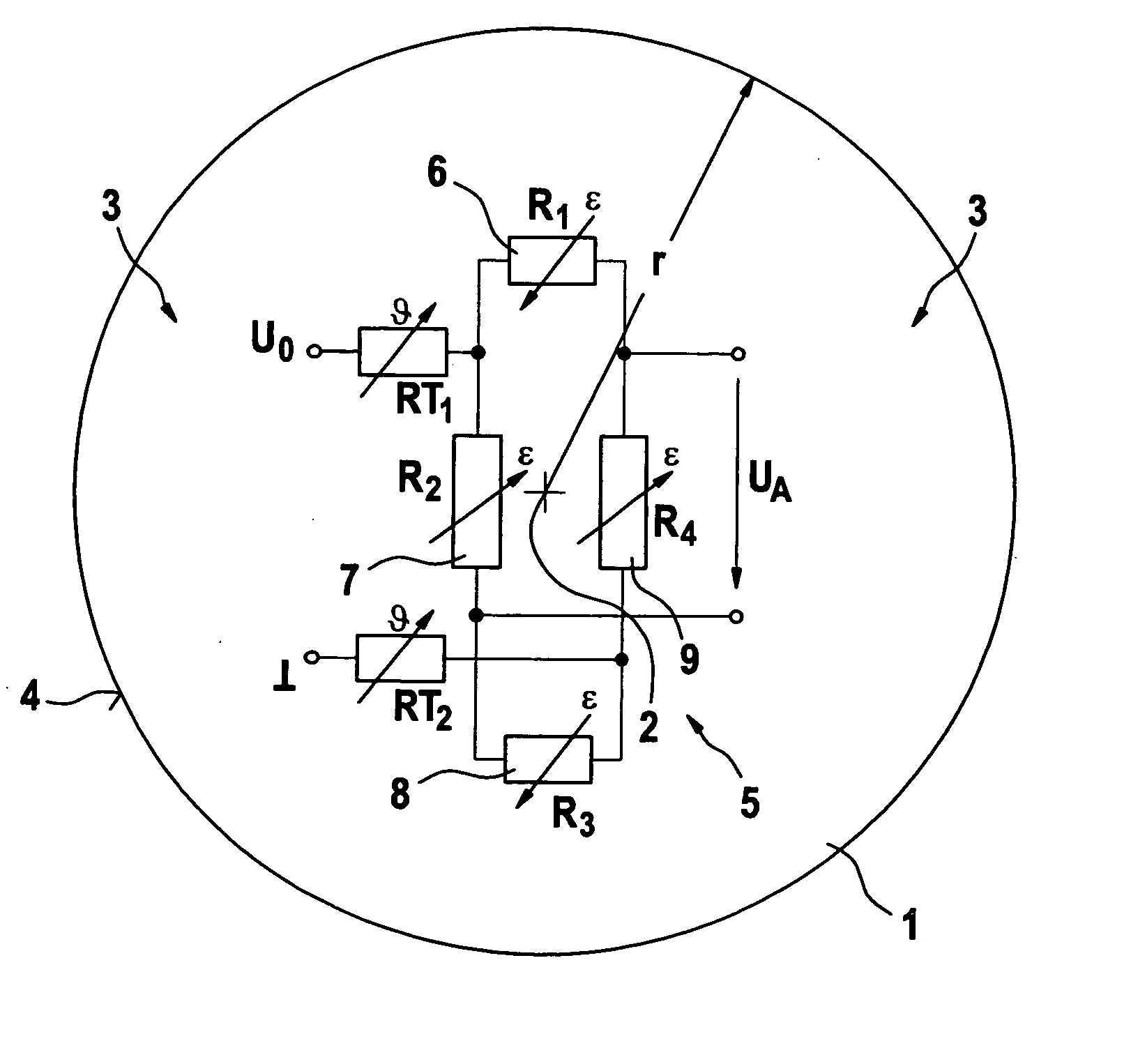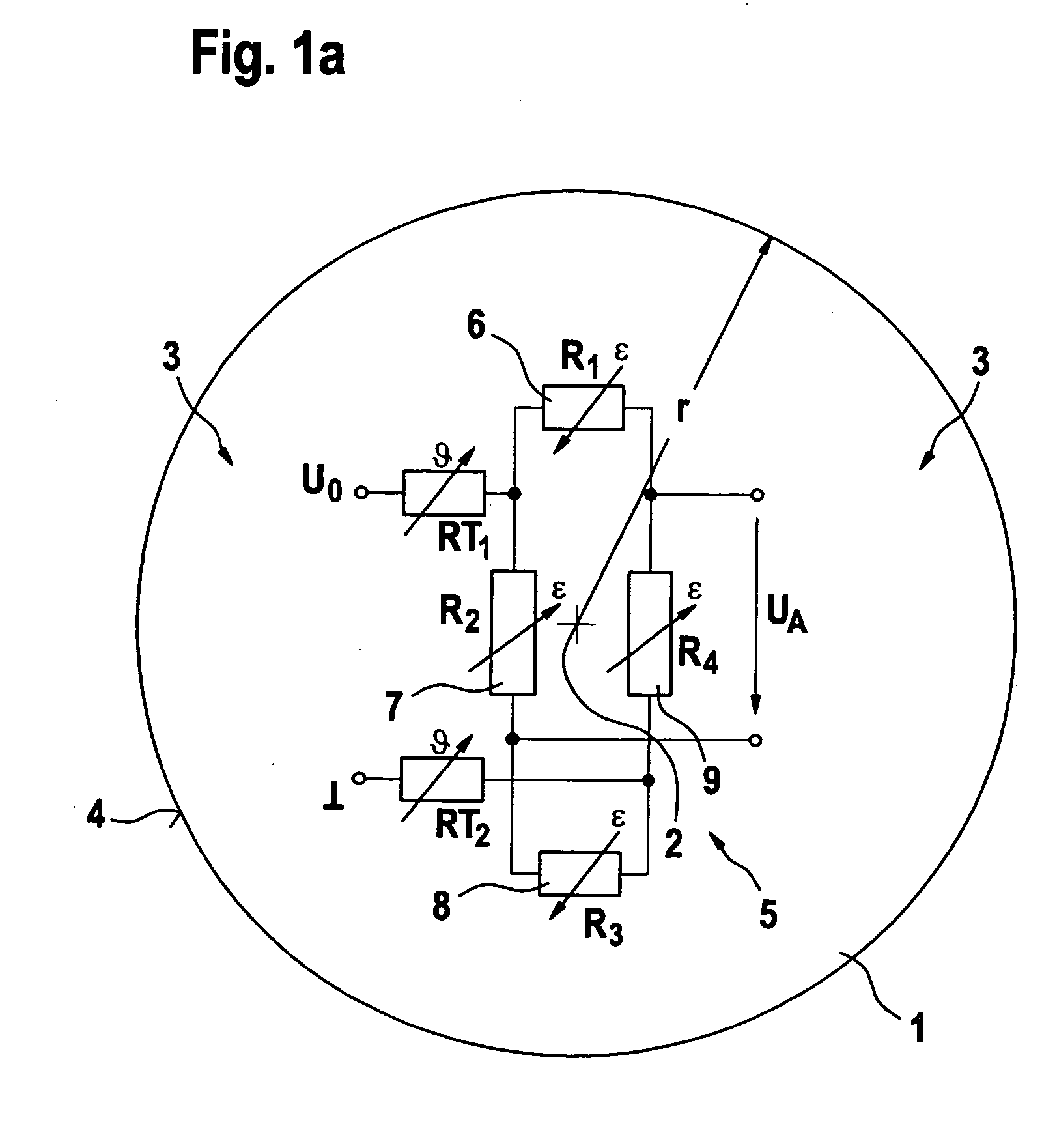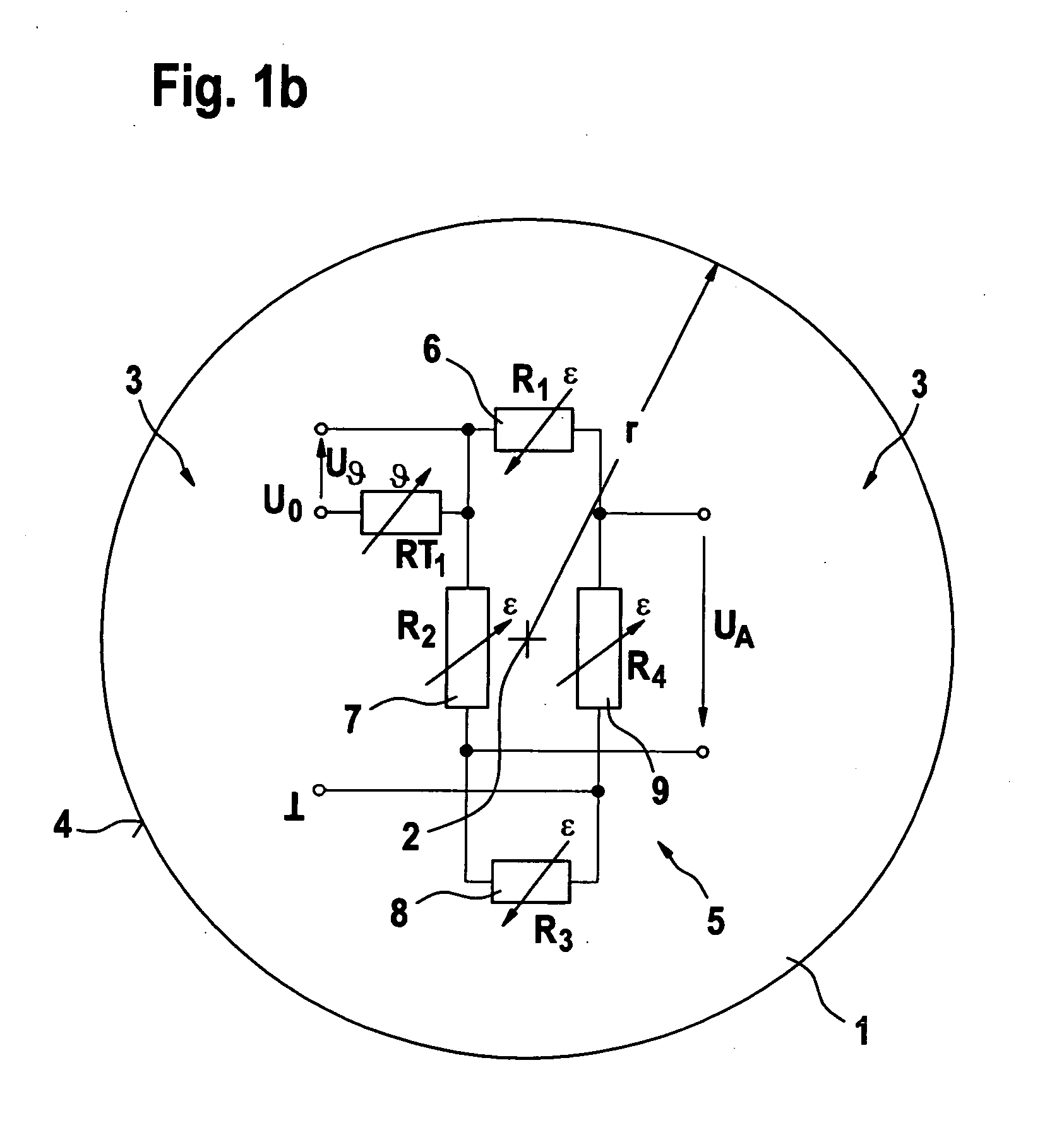High-Pressure Sensor for Pressure-Independent Measurement
- Summary
- Abstract
- Description
- Claims
- Application Information
AI Technical Summary
Benefits of technology
Problems solved by technology
Method used
Image
Examples
Embodiment Construction
[0013] The bridge circuits on a steel diaphragm as shown in FIGS. 1a, 1b, 1c and 1d represent the conventional configurations.
[0014] A bridge circuit 5, which may be designed as a Wheatstone bridge circuit, is applied to a metal diaphragm 1. Bridge circuit 5 includes multiple resistors R1, R2, R3 and R4, characterized by reference numerals 6, 7, 8 and 9. Metal diaphragm 1 may be a steel diaphragm, the center of which is labeled as 2, and having a radius r. The peripheral areas, i.e., the areas at a greater distance from center 2 of metal diaphragm 1, are each indicated by reference numeral 3. The edge of metal diaphragm 1 is labeled with reference numeral 4.
[0015] Resistors R1, R2, R3 and R4 connected in bridge circuit 5 may be strain gauges. Bridge circuit 5 is connected to a power supply voltage U0. Measurement voltage UA is tapped between resistors R1 and R4, or between R2 and R3.
[0016] Resistors R1, R2, R3 and R4 provided on metal diaphragm 1 are positioned so that they exper...
PUM
 Login to View More
Login to View More Abstract
Description
Claims
Application Information
 Login to View More
Login to View More - R&D
- Intellectual Property
- Life Sciences
- Materials
- Tech Scout
- Unparalleled Data Quality
- Higher Quality Content
- 60% Fewer Hallucinations
Browse by: Latest US Patents, China's latest patents, Technical Efficacy Thesaurus, Application Domain, Technology Topic, Popular Technical Reports.
© 2025 PatSnap. All rights reserved.Legal|Privacy policy|Modern Slavery Act Transparency Statement|Sitemap|About US| Contact US: help@patsnap.com



